#ruined basilica
Explore tagged Tumblr posts
Text

Ruins of the Roman Basilica at Volubilis, 2002
Mickey Crisp
24 notes
·
View notes
Text

Basilica di Massenzio, Roma, 2009.
26 notes
·
View notes
Text


Interior of a Roman basilica with figures by Charles-Louis Clérisseau
#charles louis clérisseau#ancient roman#ancient rome#ruins#ruin#architecture#antiquity#ancient#art#europe#european#history#interior#basilica#roman#statues#sculptures
317 notes
·
View notes
Text







Ruins and autumn colors near the Basilica of San Paolo 🥰
2 notes
·
View notes
Text

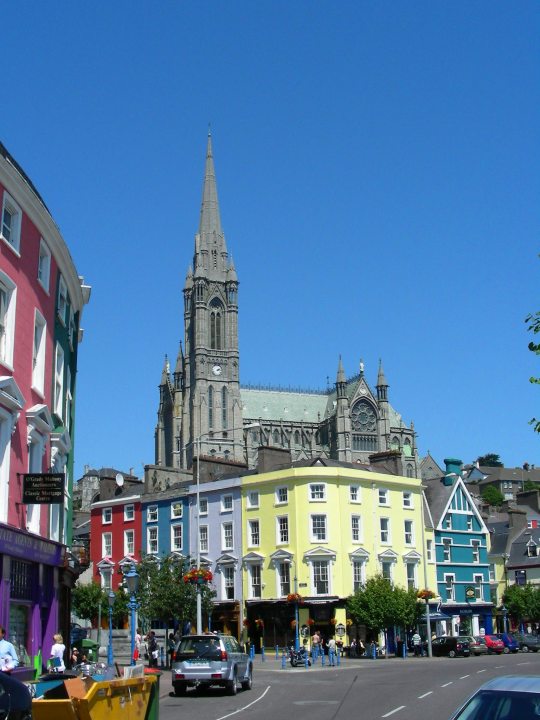
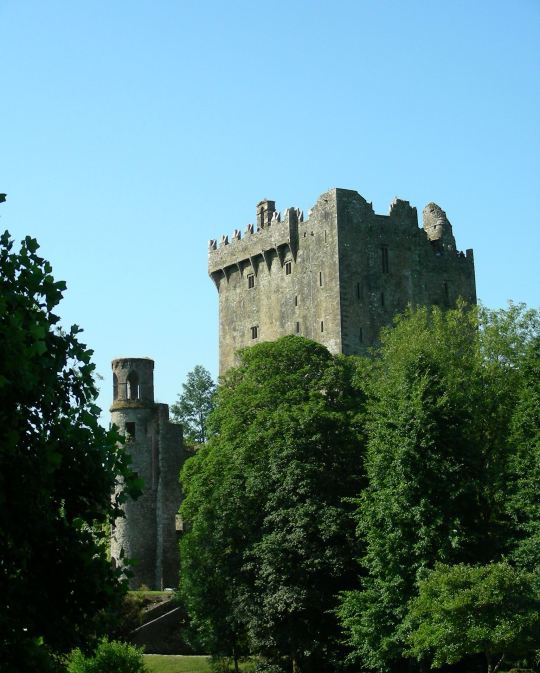
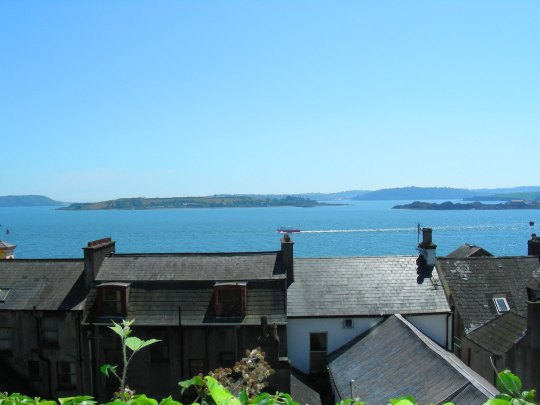
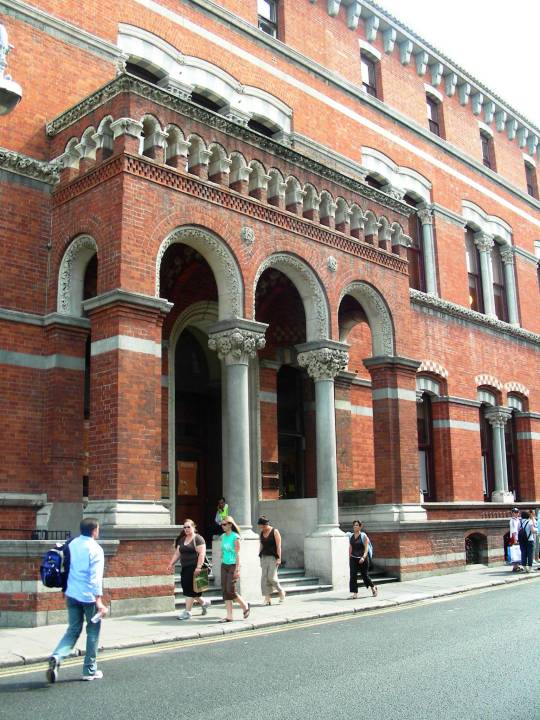

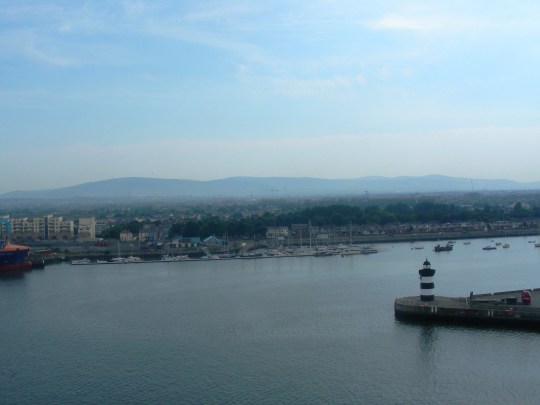
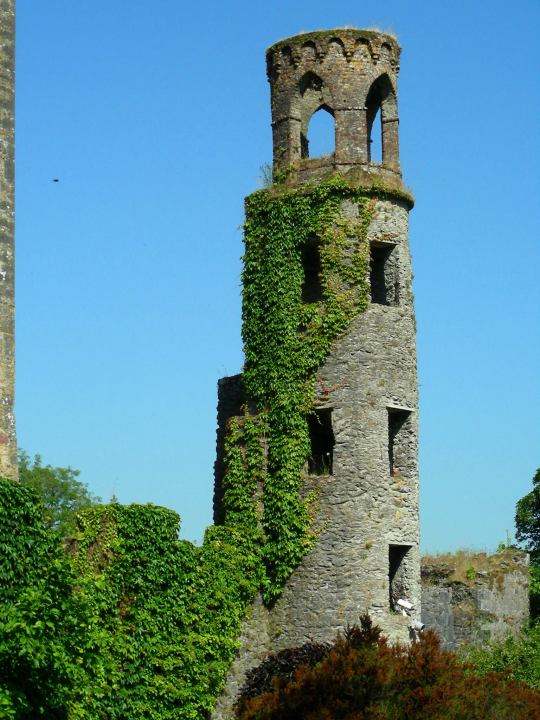
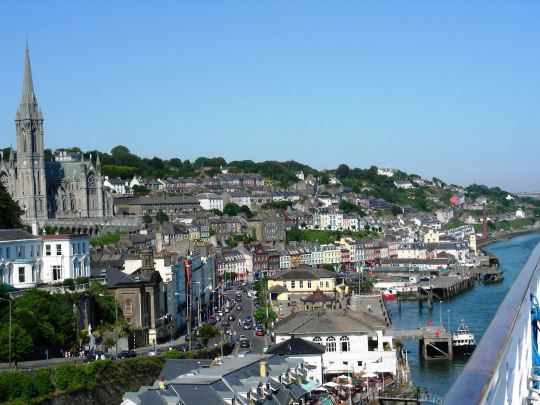
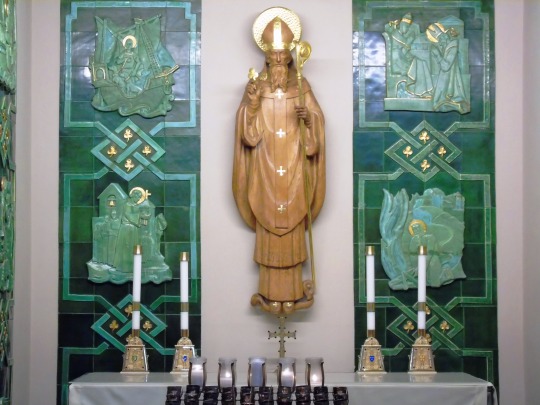
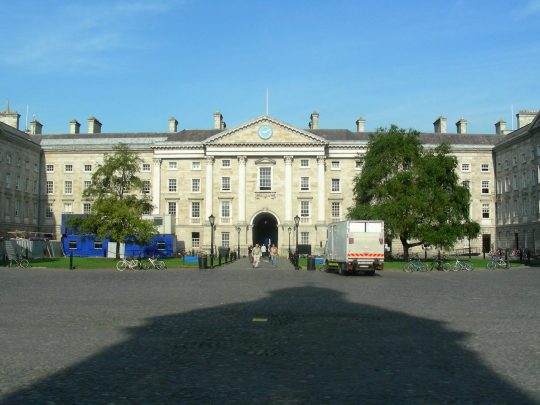

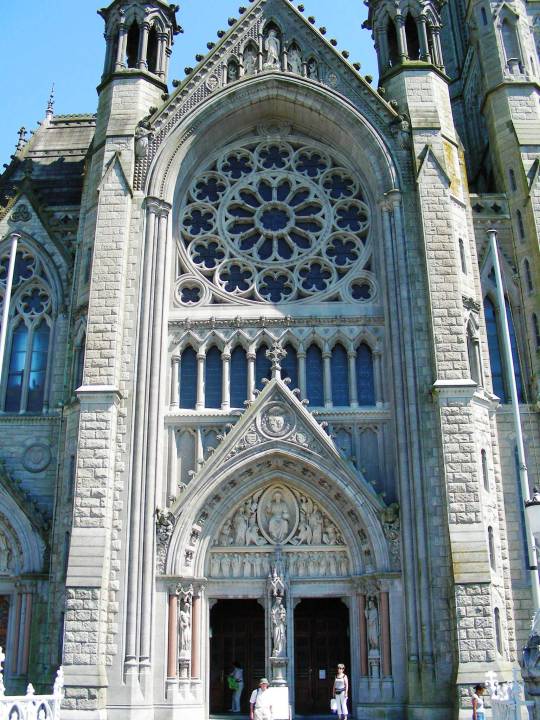


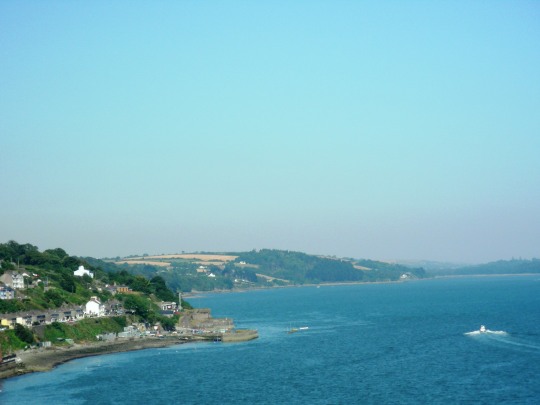
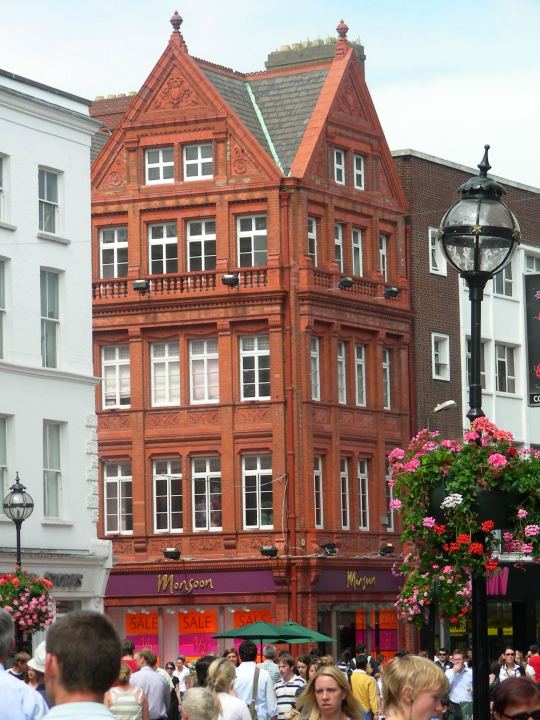

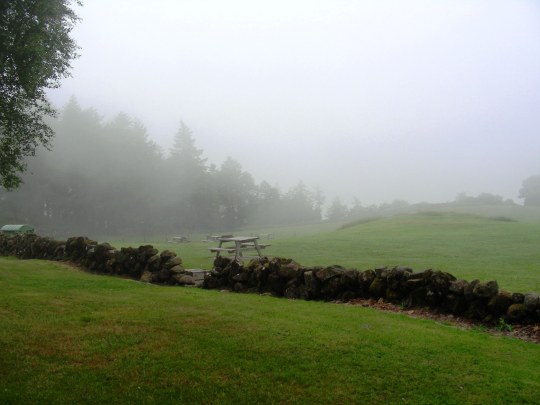
Saint Patrick’s Day
Saint Patrick’s Day is an annual feast celebrated on March 17th. Get ready to don yourself with the greenest garb, eat some clover-shaped cookies and march in Irish pride parades. St Patrick was the patron saint and bishop of Ireland. He was also the national apostle of Ireland who is credited with bringing the Christianity to Ireland. St Patrick’s Day is a religious feast day in the 17th-century which has evolved into a variety of festivals from across the globe. The celebration includes Irish culture with parades, special foods, music, dancing, and a whole lot of traditional green feast of the meal of Irish bacon and cabbage. St Patrick’s Day is also celebrated inside and outside of Ireland as a cultural and religious holiday. Saint Patrick’s Day is a global celebration of Irish culture and honors St Patrick, one of Ireland’s patron saints.
“Christ beside me, Christ before me, Christ behind me, Christ within me, Christ beneath me, Christ above me.” – Saint Patrick
History of Saint Patrick’s Day
The origin, history, and the first observance of Saint Patrick’s Day are as old as St Patrick. Therefore the exact person or organization who has come up celebrating the St Patrick is anonymous. However, the history and tradition of St Patrick’s Day celebration are rich and long. March 17th is chosen for the feast as it is the traditional death date of Saint Patrick in or around the year 493. St Patrick’s Day is otherwise called as or the Feast of Saint Patrick or Lá Fhéile Pádraig in Irish, meaning the Day of the Festival of Patrick. It is a cultural and religious celebration, and the Irish have observed this day as a religious holiday for beyond 1,000 years. St Patrick’s Day was made as an official Christian feast day during the early 17th century and is observed by the Catholic Church, the Anglican Communion, the Eastern Orthodox Church, and the Lutheran Church.
St Patrick’s Day commemorates Saint Patrick and the arrival of the Christianity in Ireland. The annual commemoration, in general, celebrates the rich heritage and culture of the Irish. People in Ireland have been celebrating the Roman Catholic feast day of St Patrick on March 17 around the ninth or tenth century. The first parade was held to honor St Patrick’s Day took place in the United States and not in Ireland. The celebration Day falls during the Christian season of Lent, and the Irish families would traditionally attend the church in the morning and celebrate it in the afternoon. People will drink, dance and feast on the traditional meal of Irish bacon and cabbage as the Lenten prohibitions against the consumption of meat were abandoned on the celebration.
Saint Patrick’s Day is still a public holiday in many countries including the Republic of Ireland and has also been celebrated in more countries than any other national festival. Until the late 20th century, the St Patrick’s Day was often a bigger celebration among the diaspora than it was in Ireland. Celebrations usually involve the public parades and festivals, Irish traditional music sessions, and the wearing of the green attire or shamrocks. The Irish brands of drinks are popular at the St Patrick’s Day events. The shamrock is considered to be the most common St Patrick’s Day symbol. The shamrock is traditionally the leaf of the clover plant that is referred to as a symbol of the Holy Trinity. People prefer to wear the color green and the St Patrick’s Day parades will hold the flag of the Republic of Ireland around the world.
The custom of ‘drowning the shamrock‘ or ‘wetting the shamrock‘ on the St Patrick’s Day was historically popular, especially in Ireland. A shamrock is then put into the bottom of a cup at the end of the celebrations and then the cup is filled with the alcohol like whiskey, beer, or cider. The alcohol is then drunk as a toast to St Patrick, Ireland, or those present. The shamrock will either be swallowed with the drink or taken out and tossed over the shoulder for the good luck. It was said that St Patrick had rid Ireland of snakes. However, there have been no snakes in Ireland. Saint Patrick was a 5th-century Romano-British Christian missionary and is considered to be the foremost patron saint of Ireland. He was an “Apostle of Ireland” and bishop in Ireland. Patrick was thought to be born in Roman Britain and was kidnapped and taken to Ireland as a slave when he was 16.
Records say that St Patrick was actually born as Maewyn Succat, but later he had changed his name to Patricius or Patrick that derives from the Latin term for “father figure,” after he has become a priest. He had later escaped but returned to Ireland. Patrick was also credited with bringing the Christianity to the people of Ireland. Patrick had already come to be worshipped as the patron saint of Ireland by the seventh century. The precise dates of Patrick’s life are uncertain as there are many conflicting traditions prevailing regarding the year of his death. It is said to have died on March 17 in or around the year 493. It is said that he had been buried under the Down Cathedral in Downpatrick, Ireland. Thus the St Patrick’s Day celebration is held on the same date throughout the world.
How to Celebrate Saint Patrick’s Day
Celebrating the Saint Patrick’s Day is quite easy. You can wear any green clothing on this celebration Day. Visit a church and attend a St Patrick’s Day parade. Serve your children with sweets and adults can enjoy drinking a ‘pint’ of beer at a local pub. You can organize parties at your home featuring the homemade Irish food and drinks that are dyed in green food colour are part of this celebration. Include the meal of Irish bacon and cabbage to treat your friends and family. If you are affordable, take a visit to Ireland to indulge yourself in the traditional celebrations. You can even go to any restaurants and pubs which offer Irish food or drink to celebrate this Day.
Source
#Saint Patrick’s Day#StPatricksDay#SaintPatricksDay#17 March 493#travel#anniversary#Irish holiday#original photography#Ireland#Cork#Cobh#Cathedral Church of St Colman#architecture#cityscape#ruins#flora#landscape#countryside#seascape#Irish Sea#tourist attraction#landmark#summer 2006#Muir Cheilteach#Blarney Castle#River Liffey#Dublin#Trinity College#St. Patrick's Cathedral#Cathedral Basilica of St. Augustine
6 notes
·
View notes
Text

Ruins of Hippone and St. Augustin Basilica in Bône, Annaba, Algeria
French vintage postcard
#annaba#historic#augustin#algeria#photography#postal#hippone#ansichtskarte#photo#sepia#basilica#vintage#postcard#briefkaart#postkarte#tarjeta#carte postale#ephemera#ruins#postkaart#bône#french
4 notes
·
View notes
Photo

Ancient Roman Ruins In Tunisia - Baptism Basin Of Basilica Of St. Vitale, Sbeitla
‘World Beauties And Wonders’
#world beauties and wonders#facebook#photographer#ancient roman ruins#tunisia#baptism basin#basilica of st vitale#sbeitla#culture#history#travel
8 notes
·
View notes
Text
Autumn in Bologna
So many beautiful places to see in Italy and autumn seems the perfect time for this adventure. So much history, wall-to-wall sunshine, 30 degrees plus and dodging the rain in Blighty. What more could you want?

We’ve been clocking up the steps in Bologna, taking in the sights and experiencing the Italian way of life in this lovely country. We’re learning more about how things work and meeting so many new people from across Europe and beyond.
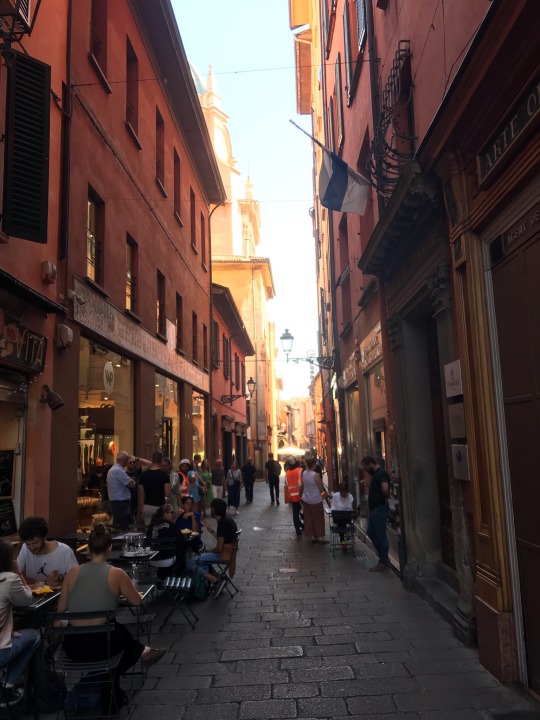
It was an easy journey into Bologna by public bus which came into the campsite for pick up and drop off. Bologna is famous as the birthplace of Marconi, the inventor of radio and his contribution is credited across the city.

Our first stop was the Salaborsa Library where the remains of an ancient Roman city are hidden below. Visitors can see the ruins through the floor of the library and go underground to explore further. Two main streets and the remains of an ancient sewage system built in the 2nd and 3rd Centuries BC can be seen. But deeper ruins suggest an even earlier settlement was there before the founding of Bologna.
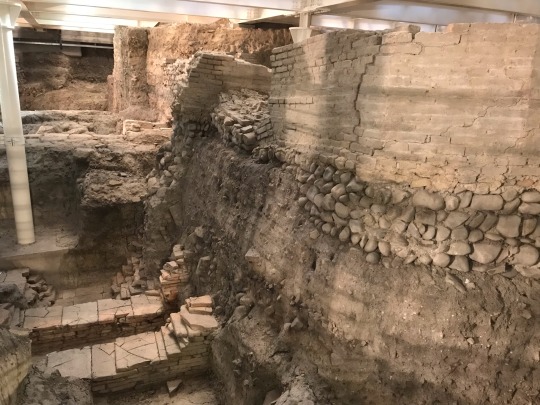
The heart of the city is Piazza Maggiore and is home to the Basilica of San Petronio which is Bologna’s most beloved and important church - but not it’s Cathedral, that is in another part of the city. The Basilica is dedicated to Petronius, the patron saint of the city, but it was never finished because the project was considered too complicated.
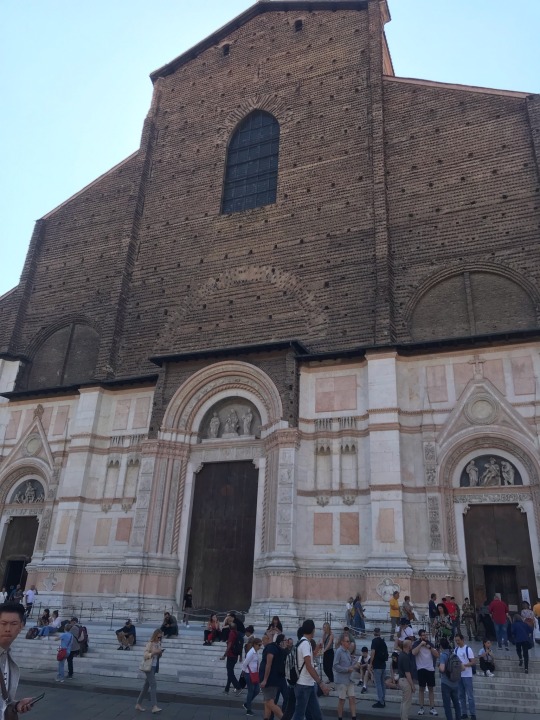
Piazza Santo Stefano is also an important site, named after the Basilica Santo Stefano which was in fact, built as not one church but a complex of seven. Restoration work in the 1800s changed the shape of the complex and four churches now remain.
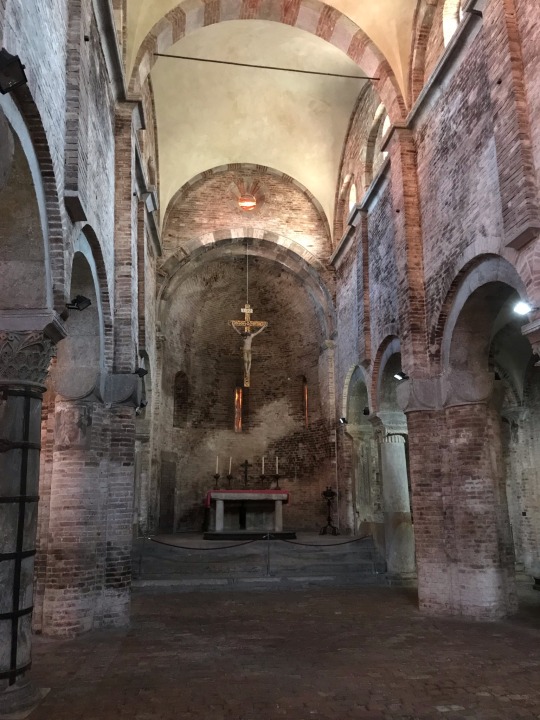
Inside, you can wander through this incredible building where every section has its own story to tell. There you can see the remains of the monastery of Santo Stefano and its cloister and the oldest nativity scene in the world.
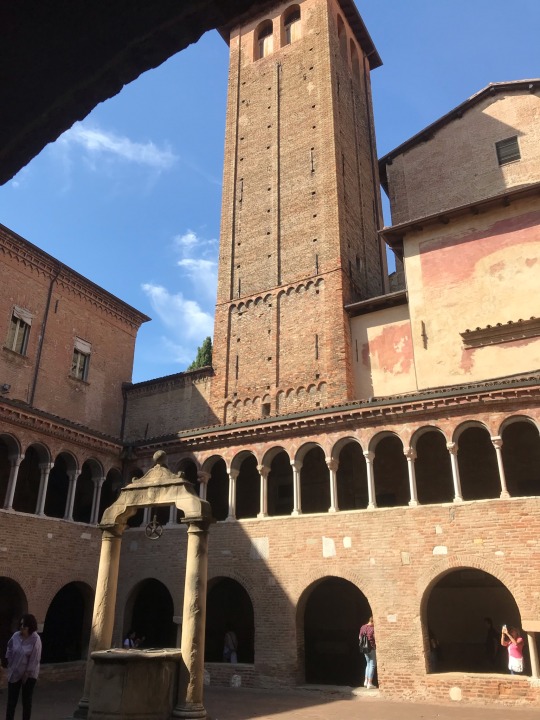
Bologna also has a 60km network of underground canals, the latest dating back to the 12th Century. These channels are now largely covered but we were able to view the “window on the canal” and this area of the city is known as “little Venice”.
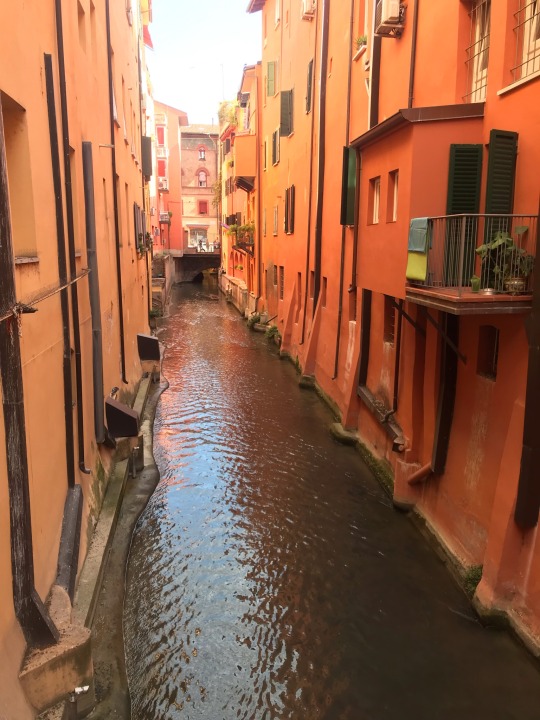
Alex has been scaling the heights again. He climbed the Asinelli Tower - the highest authentic Mediaeval tower in Italy at 97 metres high. It was originally built in 1150 to defend the city but is now a major tourist attraction.
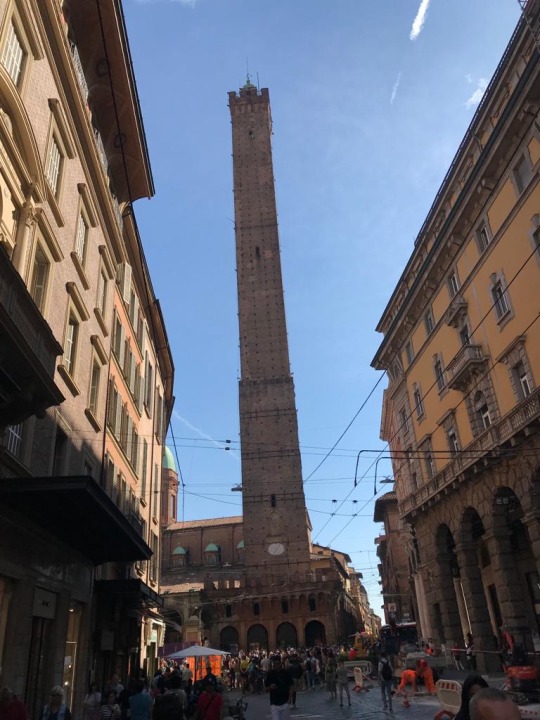
This climb was challenging to say the least as most of the others attempting this feat were considerably younger - by about 40 years! To get to the top, Alex climbed 498 steps in a winding stone and wooden staircase only wide enough for one person. There was a sheer drop to one side and a small, wooden handrail to the other.
He had to make the climb without stopping to catch his breath because he was being pursued by the 20-somethings coming up behind him. His reward was a fabulous 360 degree panoramic view of the city - but I was more worried that he was going to have a heart attack before reaching the top!
After surviving this ordeal - sorry heroic challenge - we felt it wouldn’t be right to come to Bologna without sampling one of its delicious cakes. So we found a little coffee shop tucked away in one of its historic streets and added probably half a stone each with a Primavera. It was so worth it!

Now we’re in Florence, walking off the Primavera and continuing on the next stage of our Italian adventure.
2 notes
·
View notes
Text
A-Z In A Day: From Andorra to Zaragoza
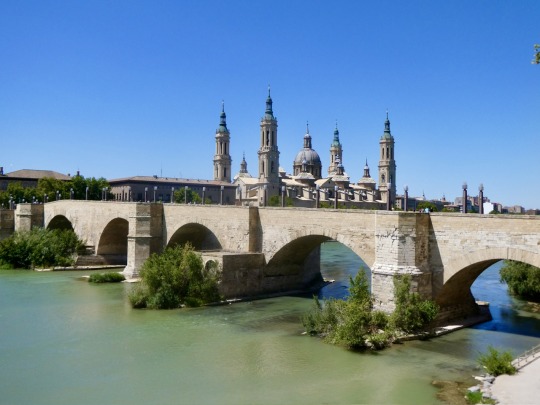
View On WordPress
#Aljaferia#Ancient bridges#Arafonese Mudejar#Architecture#Basilica#Bullrings#Caesar Augustus#Goya#independent travel#Plaza del Pilar#Roman Ruins#Spain#Zaragoza
0 notes
Text
so today i learned that there’s a piece of graffiti written on the wall of a brothel in Pompeii that reads, “Weep, you girls. My penis has given you up. Now it penetrates men’s behinds. Goodbye, wondrous femininity!”
this lead me down a rabbit hole of Pompeii graffiti, in which i found the following:
From Herculaneum (a bar/inn joined to the maritime baths): "Two friends were here. While they were, they had bad service in every way from a guy named Epaphroditus. They threw him out and spent 105 and half sestertii most agreeably on whores."
From just outside the Vesuvius gate: "Defecator, may everything turn out okay so that you can leave this place."
From the peristyle of the Tavern of Verecundus: "Restitutus says: 'Restituta, take off your tunic, please, and show us your hairy privates.'"
From Herculaneum (a bar/inn joined to the maritime baths): "Apelles the chamberlain with Dexter, a slave of Caesar, ate here most agreeably and had a screw at the same time."
From the basilica: "O walls, you have held up so much tedious graffiti that I am amazed that you have not already collapsed in ruin."
that lead me down a rabbit hole of obscene ancient Roman graffiti such as the following:
Floronius, privileged soldier of the 7th legion, was here. The women did not know of his presence. Only six women came to know, too few for such a stallion.
Chie, I hope your hemorrhoids rub together so much that they hurt worse than when they ever have before!
Theophilus, don’t perform oral sex on girls against the city wall like a dog
Apollinaris, the doctor of the emperor Titus, defecated well here
Restituta, take off your tunic, please, and show us your hairy privates
I was fucking with the bartender
Secundus likes to screw boys
Phileros is a eunuch!
Cruel Lalagus, why do you not love me?
I made bread on April 19th
Gaius Sabinus says a fond hello to Statius. Traveler, you eat bread in Pompeii but you go to Nuceria to drink. At Nuceria, the drinking is better
Anyone who wants to defecate in this place is advised to move along. If you act contrary to this warning, you will have to pay a penalty. Children must pay [number missing] silver coins. Slaves will be beaten on their behinds.
Epaphra doesn’t play football well
You can ride your maid whenever you want. It’s your right
Pyrrhus to his colleague Chius: I grieve because I hear you have died; and so farewell
O walls, you have held up so much tedious graffiti that I am amazed that you have not already collapsed in ruin
My lusty son, with how many women have you had sexual relations?
If anyone sits here, let him read this first of all: if anyone wants a screw, he should look for Attice; she costs 4 sestertii.
Samius to Cornelius: go hang yourself!
If anyone does not believe in Venus, they should gaze at my girl friend
To the one defecating here. Beware of the curse. If you look down on this curse, may you have an angry Jupiter for an enemy
We have wet the bed, host. I confess we have done wrong. If you want to know why, there was no chamber pot
What a lot of tricks you use to deceive, innkeeper. You sell water but drink unmixed wine
The finance officer of the emperor Nero says the food here is poison
Gaius was here – the oldest graffiti, dated 78 BCE; found in Pompeii.
Vote for Isidorus for aedile, he licks cunts the best
i fucking love human beings.
817 notes
·
View notes
Text


Torso from a colossal statue of the god Jupiter in the Roman forum of Djemila, Algeria, North Africa. Djémila, meaning 'beautiful' in Arabic, was called Cuicul in Roman times. It is a small mountain village in Algeria, near the northern coast east of Algiers, where some of the best preserved Berbero-Roman ruins in North Africa are found. Significant buildings in ancient Cuicul include a theatre, two fora, temples, basilicas, arches, streets, and houses.
168 notes
·
View notes
Text
i will actually never be over the narrative importance of azteca. yes it’s the first time the wizard fails, but that failure results in the destruction of an entire world, which means the death of most of its denizens and a great deal of its culture. and the fact that it’s predated by worlds like dragonspyre and celestia, specifically
azteca was less accessible to the rest of the spiral (in comparison to worlds like wizard city, marleybone, zafaria, etc) already. by the time the yw reaches it, they’ve already been to their share of since-destroyed worlds. they are, however, always seeing the aftermath of the destruction
they’ve wandered around the destroyed academy in dragonspyre and seen the lava moats in the streets and talked to the ghosts, all those things coming together to slowly paint a picture of what was once a functioning society. and then the real tragedy of that, i’d argue, hits full-force in the hall of time when the yw gets to step into and witness the old dragonspyre in all its beauty and greenery. i think this has to be a really pivotal moment for the yw because old dragonspyre looks somewhat like wizard city. they’re a child that’s realizing, if i DONT succeed in beating malistaire, current dragonspyre is what my world and all the worlds i’ve visited since will become. and they DO succeed!
and then they are sent to celestia, another mostly ruined world. it’s brighter than dragonspyre, but there’s a hell of a lot more activity, and the overall tone is much different. however, the wizard has been introduced to destruction in dragonspyre and has had their worldview of places like that forever changed. they know what was at stake and what has since been lost. it’s a great way to start the second arc that i think can pair really well with the young wizard’s growth to young adulthood. this is where morganthe is introduced, and the next chase begins, and once again— they know what they have to do and the consequences of what happens if they don’t succeed
but there’s just absolutely no way they can see azteca’s destruction coming. even if xibalba is an ever persistent presence, even if ruin has been foretold— the wizard has never lost! morganthe plays them like w fiddle! and azteca is the first destroyed world they spend a long time in prior to its destruction. they get to know it’s citizens, they spend time in some of the most beautiful and lush locations in the game, they immerse themselves in aztecan culture and practices. they grow to care about this place before it’s all wiped away so that, when it is, stepping into the ruined zocalo doesn’t feel the same as stepping into the ruined basilica or the celestian base camp. it has to hurt so much more, feel so much heavier, like a personal loss rather than just a mission loss
and to go to khrysalis right after that? to immediately have to rally the burrowers and the mantises? to walk around a world that was thought to be lost, but is still clinging on, and have to do that all over again????? man
#wizzy fandom#wizard101#wizzy101#wrote this in a stupor but i have a lot of thoughts clearly…….#khrysalis.txt
180 notes
·
View notes
Text

Cura julia, oggi Sant'Adriano al Foro, Foro, Roma, 2019.
The building where the Roman Senate once met is in a remarkable state of preservation thanks to its 7th century conversion to a church
#urban landscape#archeology#roman empire#ruins#cura julia#roman forum#basilica#roma#lazio#italia#2019#photographers on tumblr
10 notes
·
View notes
Text
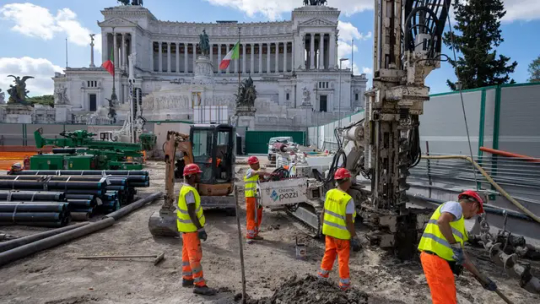
Rome is Building an Eight-Story Underground Museum – But Treasures Keep Getting in the way
Rome, as it’s often said, wasn’t built in a day. And nowhere is that more evident than its state-of-the-art Metro Line C, an ambitious project meant to help relieve the Italian capital’s renowned traffic hellscape and celebrate its rich archeological history with a unique-in-the-world underground museum.
The €700 million line ($757.7 million) was originally envisioned for the Catholic Jubilee of 2000 as a vital link between Rome’s San Giovanni Cathedral and Vatican City’s St. Peter’s Basilica, making it easier for visiting pilgrims to collect indulgences by walking through the churches’ holy doors. Rome’s major basilicas open their holy doors only during Jubilee years, allowing Catholics from all over the world to make pilgrimages to the city to walk through them, symbolizing an openness to receive mercy and reconciliation.
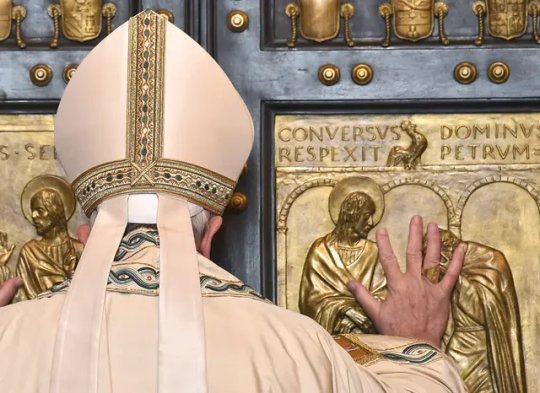
But the 2000 dream never happened, thanks to a series of problems ranging from a corruption scandal in the city government and the sheer number of archeological objects – 40,000 in all, from petrified peach pits to pottery and vases and even the walls and mosaics of Emperor Hadrian’s 2,000-year-old military barracks – found with each shovel full of dirt during the initial preparations.
Now the hope is to have the line’s showcase Piazza Venezia stop, featuring an eight-story underground museum, ready in 10 years, according to engineer Andrea Sciotti, who is in charge of the metro museum complex. This will allow them to open around the Jubilee of 2033, which will mark 2,000 years since the death of Jesus Christ.
“It’s true, 10 years seems like a long time, but we aren’t just dealing with the engineering issues,” Sciotti said inside the construction site. “This station will be judged as the most beautiful in the world … we don’t have to rely on museum items being brought in, the museum station is in its original context in ancient Rome.”
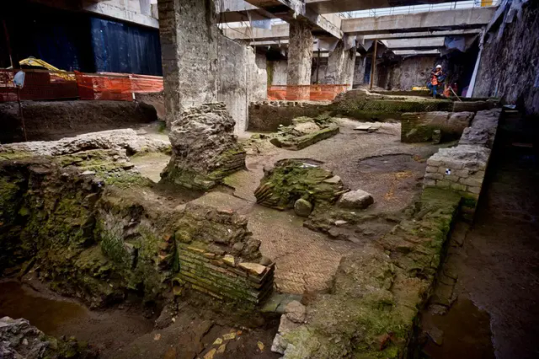
Displayed where they were found:
During the initial phases of work carried out in the last five years, Sciotti said all of the artifacts were removed from the site for restoration. Each will be placed exactly where it was found inside the metro museum, which is being dug some 85 meters (280 feet) deep, encompassing eight stories below the modern city of Rome.
Over the millennia the modern city has been built over covered ruins. Only around 10% of ancient Rome has been excavated, with the rest still buried some nine meters (30 feet) below the current city, according to Rome’s tourist bureau. The city dates back to the stone age and construction work is notoriously hampered by the discovery of ruins that are too plentiful to even excavate and are often reburied to preserve them. Even simple infrastructure work, like sewage repairs, have to be attended by archeologists who have the power to stop the work if something is found.
There will be 27 escalators, six elevators and 66,000 square meters of archeological exhibit space. Ancient walls found during excavations will be placed “in situ” in the modern station and the ancient Via Flaminia that ran through the ancient city to the nearby Roman Forum and Colosseum.
The station’s three main entrances will connect the three museums around the square: the Vittoriano, the Palazzo Venezia and the outdoor ruins of the Roman Forum anchored by the Colosseum at the far end, which has its own metro station that will also feature museum and exhibit space.
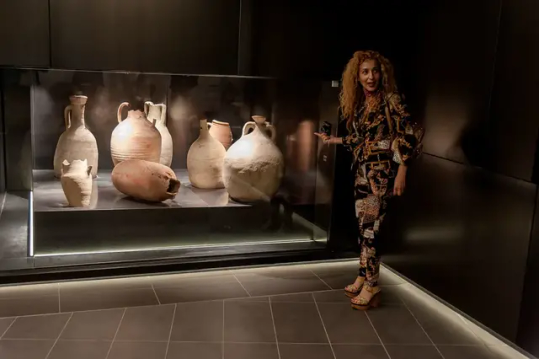
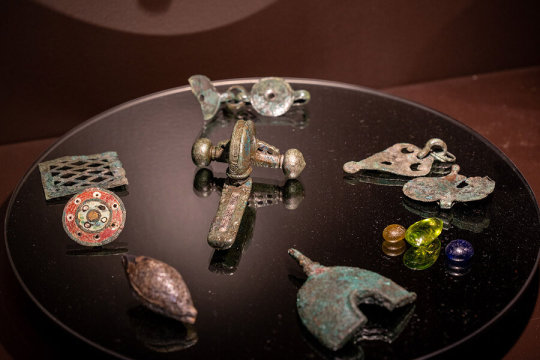
Several of the archeological sites will have access points from inside the metro museum, meaning commuters and tourists alike can exit the station by rambling through historically significant ruins like Hadrian’s Auditorium, which was discovered when the initial archeological investigation into the project started and was meant to be the location of the station entrance. Since then, they moved the site and excavated the ruins, which are currently only visible looking down from street level.
‘Top down’ excavation system:
To secure the site as they dig, engineers are using a “top down” excavation system, which has never been used in Italy but was an integral part of the Jubilee line in London. Cross walls and diaphragms are being buried deep into the soil to form the perimeter of the underground complex, with the dirt taken out recycled and enhanced to be used in the building materials, Sciotti said.
The train tunnels themselves are not the issue since they will be more than 100 feet below ground.
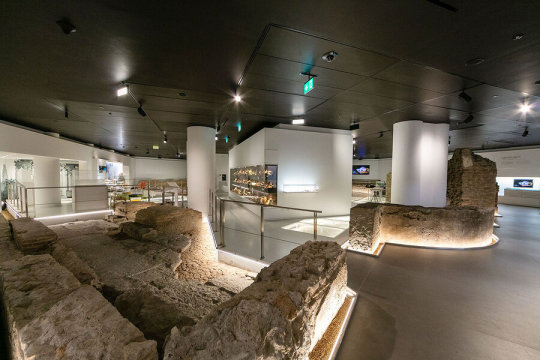
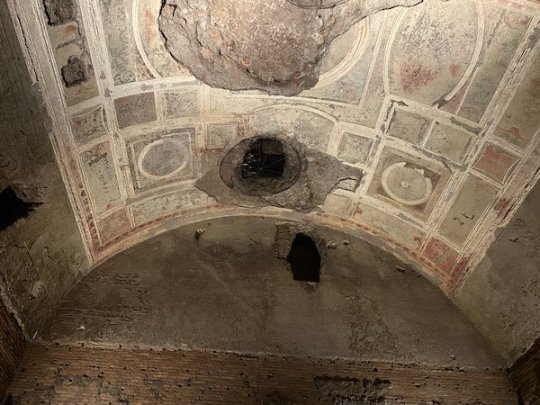
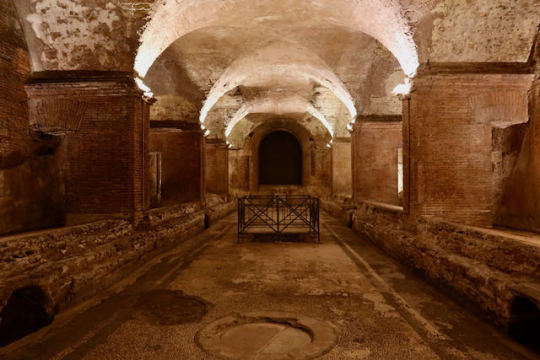
The Venezia station museum stop is not the only treasure on the new line. In 2016, archeologists working on the site of the Porta Metronia (previously known as the Ambra Aradam) station found a 39-room complex that spanned more than 9,700 square feet that has been incorporated into the underground station, which will open by the end of 2024. In 2025, the new Colosseo-Fori station, complete with a four-level underground museum to showcase artifacts including 25 archaic wells unearthed when it was built, will also open after activation tests, meant to begin in October, are completed.
The entire 26-kilometer C-line will be Italy’s first fully automated driver-less subway system and will reduce road traffic by 400,000 vehicles a day, meaning CO2 emissions will be reduced by some 310,000 tonnes a year, according to the WeBuild group, which is the main contractor for the project.
The original plans from the 2000 Jubilee have been modified to eliminate several stations in the historical center that would have simply been too difficult to excavate.
By Barbie Nadeau.
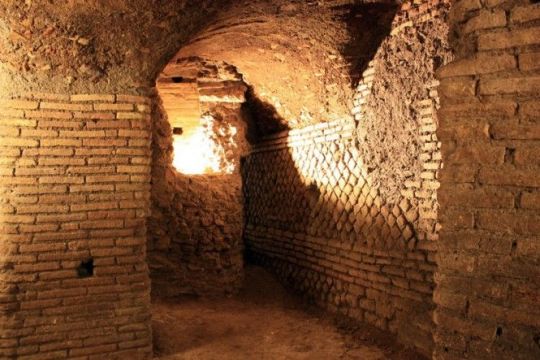
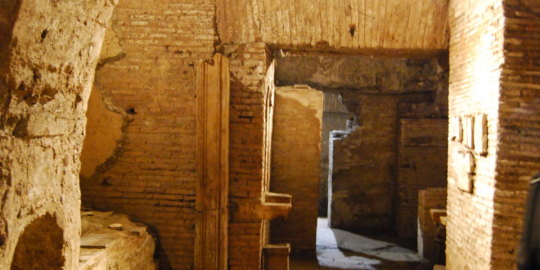
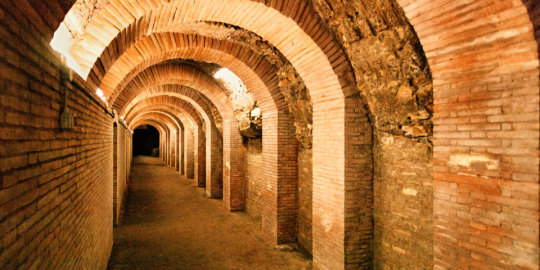
#Rome is Building an Eight-Story Underground Museum#The Venezia station museum#Metro Line C#Piazza Venezia stop#ancient artifacts#archeology#archeolgst#history#history news#ancient history#ancient culture#ancient civilizations#ancient rome#roman history#roman empire#roman art#ancient art#long post#long reads
121 notes
·
View notes
Photo

Basilica Cistern in Istanbul, an underground water storage facility built in the 6th century, contains two enigmatic Medusa heads, one placed upside down and the other sideways, possibly to neutralize the power of her gaze as per mythology.
Largely forgotten after the fall of Constantinople in 1453, it was rediscovered in 1545 by French traveler Petrus Gyllius, who learned of it from locals drawing water through holes in their basements.
The origins of the Medusa heads are unknown but are generally thought to have come from Roman ruins, repurposed for the cistern’s construction.
72 notes
·
View notes
Text
sculptures round 2 poll 16


Dragon chandelier by Veit Stoß (Wit Stwosz), c. 1522
propaganda: I mean what even is this?! beside fucking awesome I mean
[stoß / stwosz was a german sculptor. he worked in kraków for about 20 years, his most famous “polish” work being the altarpiece in st. mary’s basilica]
Uncle Vanya by Adam Niklewicz, 2022:
propaganda: I have to think of the kind of relative I though was so funny or strange as a child, only to learn as I grew older about the problems with mental illness and life they had to deal with, and how something dangerous like drinking can be ingrained into culture, how you can have fond memories about it, but it also ruins so many lives.
40 notes
·
View notes